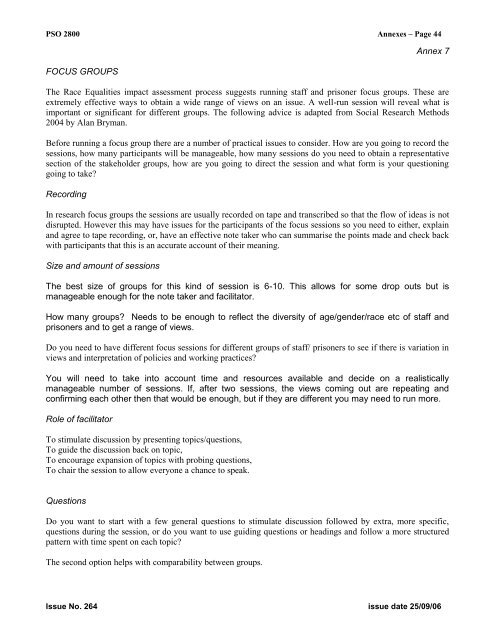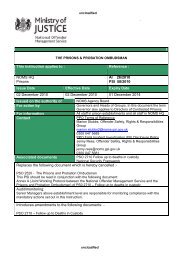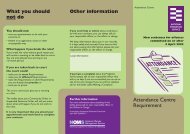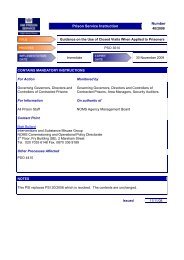PSO 2800 - Inside Time
PSO 2800 - Inside Time
PSO 2800 - Inside Time
- No tags were found...
Create successful ePaper yourself
Turn your PDF publications into a flip-book with our unique Google optimized e-Paper software.
<strong>PSO</strong> <strong>2800</strong> Annexes – Page 44FOCUS GROUPSAnnex 7The Race Equalities impact assessment process suggests running staff and prisoner focus groups. These areextremely effective ways to obtain a wide range of views on an issue. A well-run session will reveal what isimportant or significant for different groups. The following advice is adapted from Social Research Methods2004 by Alan Bryman.Before running a focus group there are a number of practical issues to consider. How are you going to record thesessions, how many participants will be manageable, how many sessions do you need to obtain a representativesection of the stakeholder groups, how are you going to direct the session and what form is your questioninggoing to take?RecordingIn research focus groups the sessions are usually recorded on tape and transcribed so that the flow of ideas is notdisrupted. However this may have issues for the participants of the focus sessions so you need to either, explainand agree to tape recording, or, have an effective note taker who can summarise the points made and check backwith participants that this is an accurate account of their meaning.Size and amount of sessionsThe best size of groups for this kind of session is 6-10. This allows for some drop outs but ismanageable enough for the note taker and facilitator.How many groups? Needs to be enough to reflect the diversity of age/gender/race etc of staff andprisoners and to get a range of views.Do you need to have different focus sessions for different groups of staff/ prisoners to see if there is variation inviews and interpretation of policies and working practices?You will need to take into account time and resources available and decide on a realisticallymanageable number of sessions. If, after two sessions, the views coming out are repeating andconfirming each other then that would be enough, but if they are different you may need to run more.Role of facilitatorTo stimulate discussion by presenting topics/questions,To guide the discussion back on topic,To encourage expansion of topics with probing questions,To chair the session to allow everyone a chance to speak.QuestionsDo you want to start with a few general questions to stimulate discussion followed by extra, more specific,questions during the session, or do you want to use guiding questions or headings and follow a more structuredpattern with time spent on each topic?The second option helps with comparability between groups.Issue No. 264 issue date 25/09/06
















